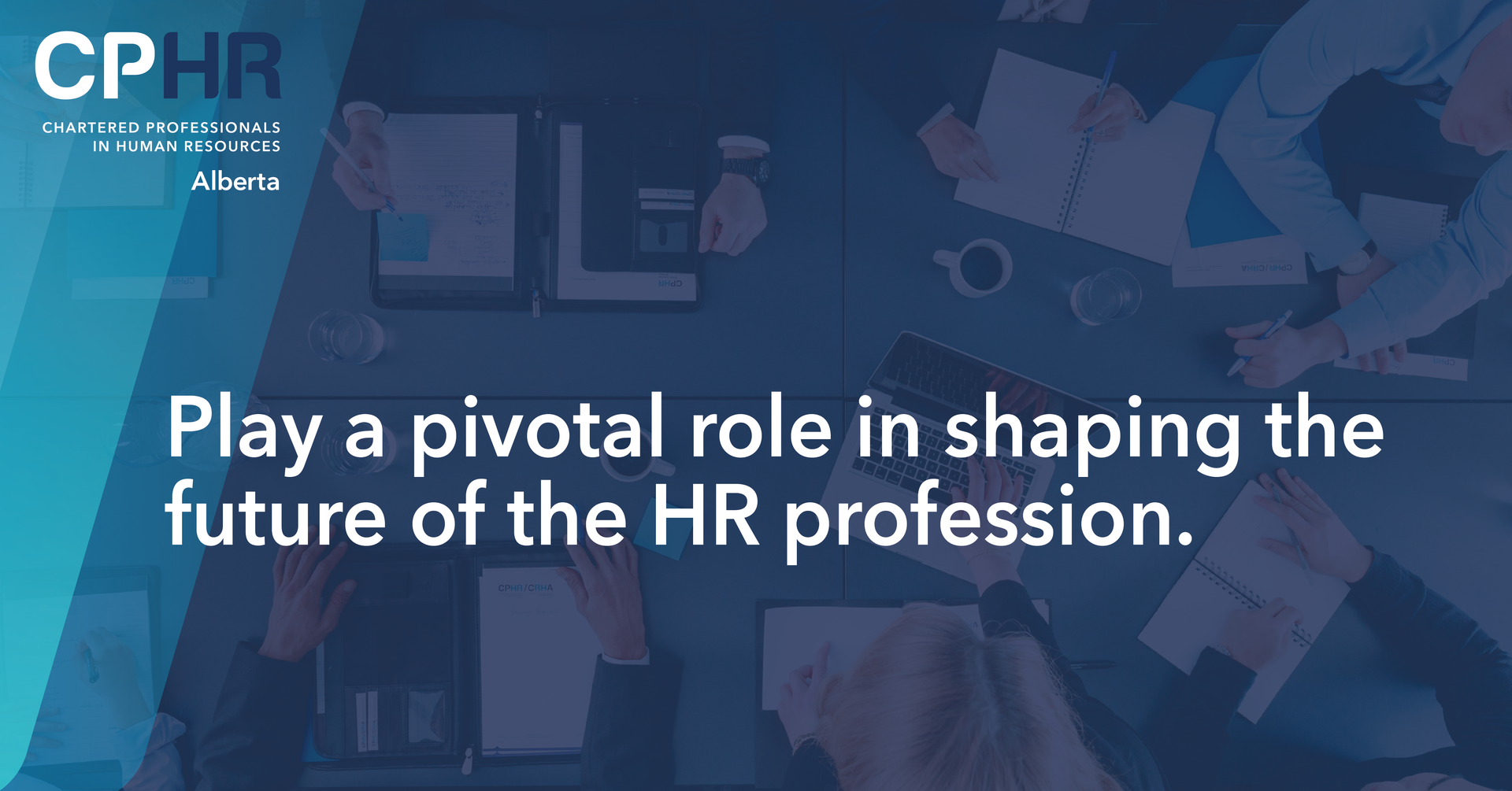
Become a CPHR Alberta champion!
Seeking CPHRs and Public Board Members
Help set the direction for your association on the CPHR Alberta Board of Directors.
From self-regulation and the future of our designation to relationships with other provincial HR associations to the sustainability of CPHR Alberta itself, the Board of Directors is the governing voice of CPHR Alberta. Our volunteer Directors share their time and talent to represent the interests of fellow CPHR Alberta members and stakeholders.
Board volunteers provide oversight and guidance in a number of key areas. In 2024, the Board, alongside CPHR Alberta operations, continued delivering on the association's priorities that were developed in the 2020 strategic plan.
To continue this positive momentum, we are seeking two (2) Chartered Members of CPHR Alberta that have, or are willing to make, connections in the community that will assist the Board's linkage to stakeholders, and up to two (2) public members with specific expertise noted below.
To complement the existing Board of Directors, we are specifically looking for candidates that are board ready and have experience and/or expertise in the following areas:
- Strategic business leadership experience;
- Financial acumen and financial management expertise;
- Legal expertise; and/or
- Inclusion, Diversity, Equity, and Accessibility experience within an Indigenous lens
We highly value diversity and support the election and appointment of diverse candidates to the Board. The Board believes that having directors of diverse gender, race and ethnicity, along with varied skills, perspectives and experiences, contributes to a balanced and effective Board – one that is well-positioned to address the changing needs of the organization and our membership.
APPLICATION PROCESS
CPHRs
Ensuring the CPHR Alberta Board of Directors has the skills and experience to guide the association is a priority. For 2024 / 2025 Board applications and elections will follow the following processes below for Chartered Members:
- Applications will be open from December 3, 2024 to January 6, 2025 where only CPHR Alberta Chartered Members can apply through their member portal. Members are encouraged to review the
position profile, including qualifications and desired skills.
- Our online form makes nominations easier. It should only take a few minutes to complete the form within your member profile. You can locate the form under the MENU, within your member portal.
Click here to start.
- The CPHR Alberta Board of Directors Human Resources Committee will review all the applications following the close on January 6, 2025.
- Interviews of eligible candidates will be conducted by the Human Resources Committee in January / February 2025. These interviews will be used to create a slate of the most qualified candidates.
- The slate of candidates will be presented to the Membership for the Board Election period of March 3 – 14, 2025. All Chartered members are eligible to vote in the Election.
Election results will be presented to the Membership during the Annual General Meeting on May 9, 2025.
Public
- Applications will run from December 3, 2024 to January 6, 2025. If interested, please contact Heather McMaster at
hmcmaster@cphrab.ca to receive your application package. Please review the
position profile, to ensure the qualifications and desired skills are met.
- The CPHR Alberta Board of Directors Human Resources Committee will review all the applications following the close on January 6, 2025.
- Interviews of eligible candidates will be conducted by the Human Resources Committee in January / February 2025. These interviews will be used to create a short list that will be presented to the CPHR Alberta Board of Directors for a decision.
- Successful candidates will be shared with membership once determined.
Shape the future of CPHR Alberta.
For Chartered members - Start your application today.
For Public members – contact Heather McMaster at hmcmaster@cphrab.ca for the application package and checklist.
Questions about the CPHR Alberta Board of Directors nominations?
Email Geordie MacPherson, Board Chair, at chair@cphrab.ca
The views and opinions expressed in this blog post belong solely to the original author(s) and do not necessarily represent the views and opinions of CPHR Alberta.





